Best fitness trackers 2022: Top activity bands and fitness watches
This year’s best fitness trackers for monitoring exercise, sleep and general wellness, including sports watches from Apple and Fitbit.

The best fitness trackers are designed to help you keep tabs on your workouts so you can see how effective they are. Activity bands also track aspects of your sleep if you wear them in bed, plus some track menstruation, stress levels and body temperature. Proper fitness watches, made by the likes of Apple, Garmin, Fitbit and Polar, are next-level wearables capable of taking a deep dive into your exercise metrics. These are favored by fitness enthusiasts, but much of that tech is now trickling down to basic, cheap fitness trackers.
And not everyone needs the same features in an activity band or watch. So if you just want to track steps and daily activity, the best fitness tracker for you is a simple band that displays those numbers on its screen. If you want to accurately track heart rate, stress response and VO2 Max (how much oxygen is delivered into your bloodstream during exercise), you’ll need a more premium fitness watch.
Activity trackers can be used for a range of outdoor and home gym exercises, from swimming and HIIT, to cycling or full body elliptical machine workouts. The best fitness trackers auto-recognize not only when you’re exercising, but which type of exercise you’re doing. When paired with your phone, they can also be synced with apps like Google Fit and Apple Health. This gives you extra insight into your health and fitness goals. But remember: if you have any concerns about your health, speak to your doctor and do not rely on a fitness tracker for diagnosis.
When it comes to using the sleep tracking function on activity bands, we’d advise taking the results with a pinch of salt. Not all of them are accurate and a huge number of factors affect their ability to track your slumber. Finally, the best fitness trackers from brands like Fitbit also offer (on a subscription basis) access to online fitness programs, so you can enjoy a variety of fun ways to move your body and stay active.
Fitbit Luxe: The best fitness tracker overall
Why you can trust Top Ten Reviews

Fitbit Luxe Fitness and Wellness Tracker
Specifications
Reasons to buy
Reasons to avoid
If you’re shopping for the best fitness tracker to help you get out of an exercise rut and to really overhaul your health and fitness, the Fitbit Luxe is the one to buy. It’s the newest addition to the Fitbit range and it’s as stunning on the inside as it is on the outside.
It’s waterproof, offers up to seven days’ battery life, and dishes out 24/7 heart rate monitoring. The Fitbit Luxe keeps tabs on your everyday activity, including steps taken and distance covered, as well as your workouts. There are 20 exercise modes here, covering most popular exercises, such as running and cycling.
All of your fitness data is shown on a bright, color AMOLED display, and you can fire up the companion app to dig deeper into various workout and wellness metrics. In short, the Fitbit Luxe encourages you to take a good look at your overall health to see how you could enhance it, day by day.
This includes your shut-eye, with the Fitbit Luxe generating a Sleep Score based on how much sleep you got the night before, plus what type of sleep (Deep, REM, etc) you enjoyed. If you haven’t downloaded a dedicated meditation app for breathwork, there are guided breathing sessions on offer too.
These tie-in with the Fitbit Luxe’s Stress Management Score feature, and could be the friendly reminder you need to take a few moments out each day to reduce any stress you’re feeling.
2. Apple Watch Series 6: The best fitness watch overall
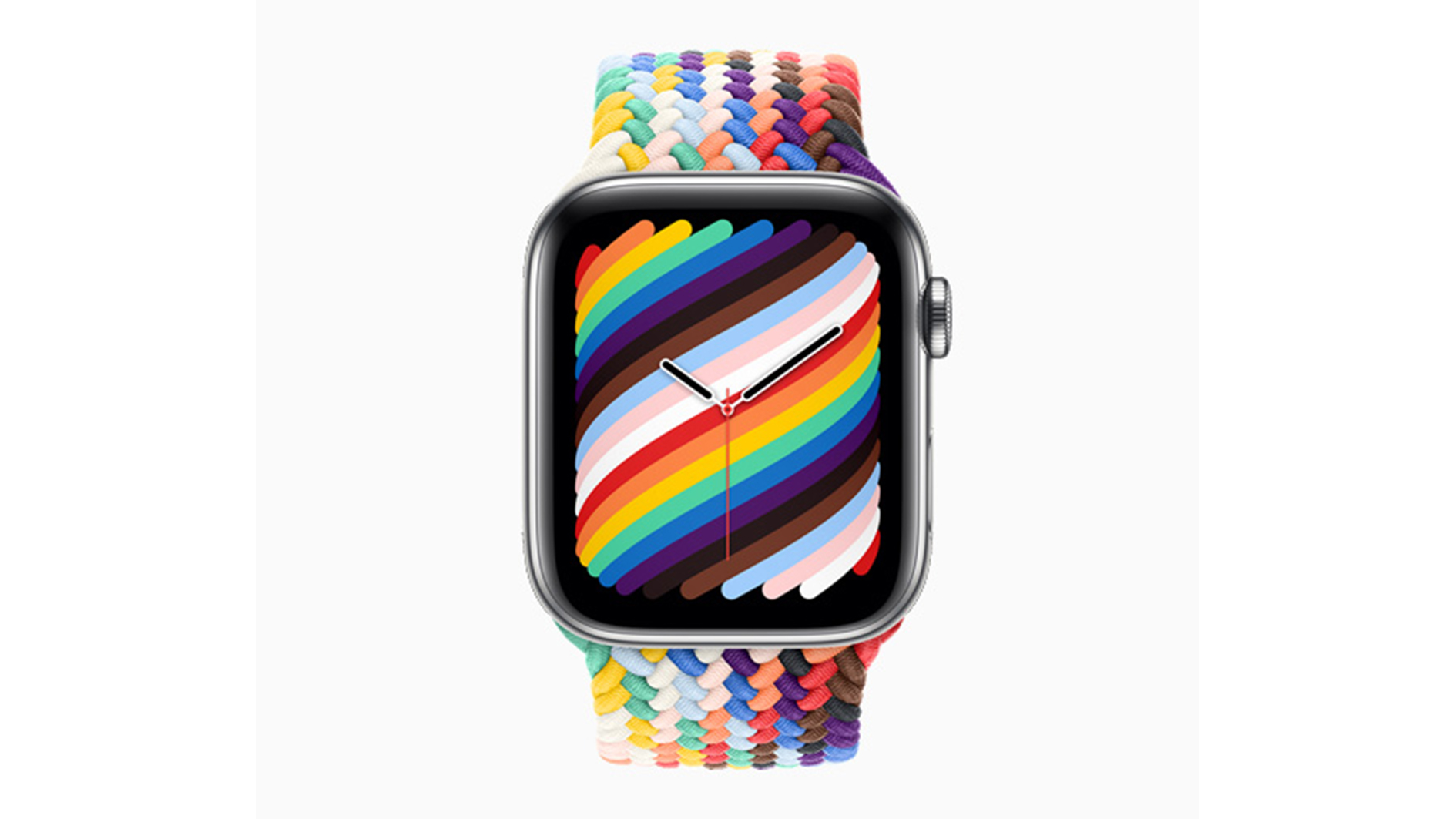
Apple Watch Series 6
Specifications
Reasons to buy
Reasons to avoid
Apple's focus with the Apple Watch Series 6 has been on improving its health tracking functionality. It hit the bullseye thanks to a powerful OS upgrade and a series of new features that outpace all other fitness watches, with the exception of Fitbit’s smartwatches.
These features start with a blood oxygen sensor for on-demand readings. Blood oxygen represents the amount of oxygen carried by your red blood cells from your lungs to the rest of your body. Apple states that measurements are “not intended for medical use and are only designed for general fitness and wellness purposes”. Here is what a cardiologist thinks of the app’s accuracy.
The Apple Watch Series 6 also sports an ECG app, which has been generally well-rated by health professionals. It records your heartbeat and rhythm, then checks that for atrial fibrillation (AFib). Data can be exported and shared with your doctor.
Sleep tracking is here too, though, as with most trackers, it’s quite basic. Wear the Watch to bed and you can create a custom sleep schedule and view your sleep history. In terms of fitness tracking, the Apple Watch Series 6 utilizes an altimiter to measure the height of your runs or walks, and it carries over the excellent heart rate sensing, step counting and GPS-tracking of the Apple Watches before it.
The only real issues are short battery life, which means it needs to be charged daily, and that it's only compatible with iPhones. Android users, see below.
3. Fitbit Charge 4: Best activity band for period tracking
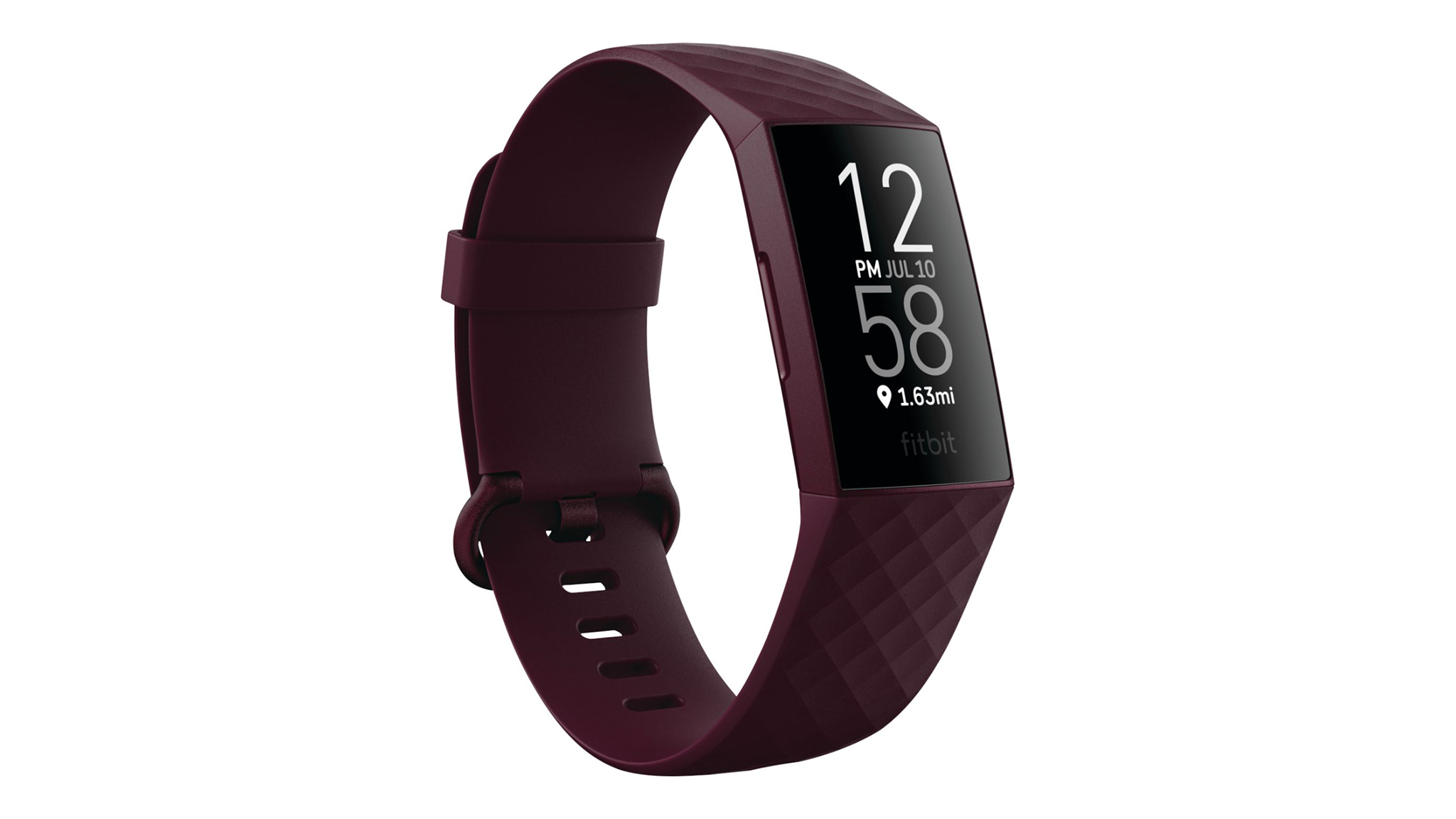
Fitbit Charge 4
Specifications
Reasons to buy
Reasons to avoid
When you first look at the Fitbit Charge 4, you might quickly mistake it for the Charge 3. However, there are some key differences under the hood. Namely, the Fitbit Charge 4 has on-board GPS, which means you can leave your phone at home when heading out for a run, walk or hike and your exercise will still be tracked. When you’re out, you could also use Fitbit Pay for contactless payments.
We also love Fitbit’s new feature called Active Zone Minutes, a form of heart rate training. Based on your age and current fitness level (gauged by the fitness tracker and your ongoing workouts), it encourages you to exert yourself a little harder or for longer to strengthen your heart and elevate your fitness.
Every bit of activity counts here too, so you may find that you’ll feel more encouraged to stay active throughout your day. If you sign up to Fitbit Premium, the brand's online fitness program, you'll gain access to a variety of workouts too.
In terms of design, the Fitbit Charge 4 is slimline and lightweight. It’s also so comfy you’ll probably forget you’re wearing it. While it doesn’t have a color screen, the icons and apps viewable on the display are well laid-out and easy to see at a glance. Swiping through them is also fast and simple.
The sleep tracking and period tracking features are decent too, though we would still recommend using a period tracking app in the beginning if you have an irregular cycle. Overall, the Fitbit Charge 4 really is the best fitness tracker for the majority of people, and is simple to use even if you’re new to exercise and the world of fitness bands.
4. Polar Ignite 2: Best fitness tracker for varied workout routines
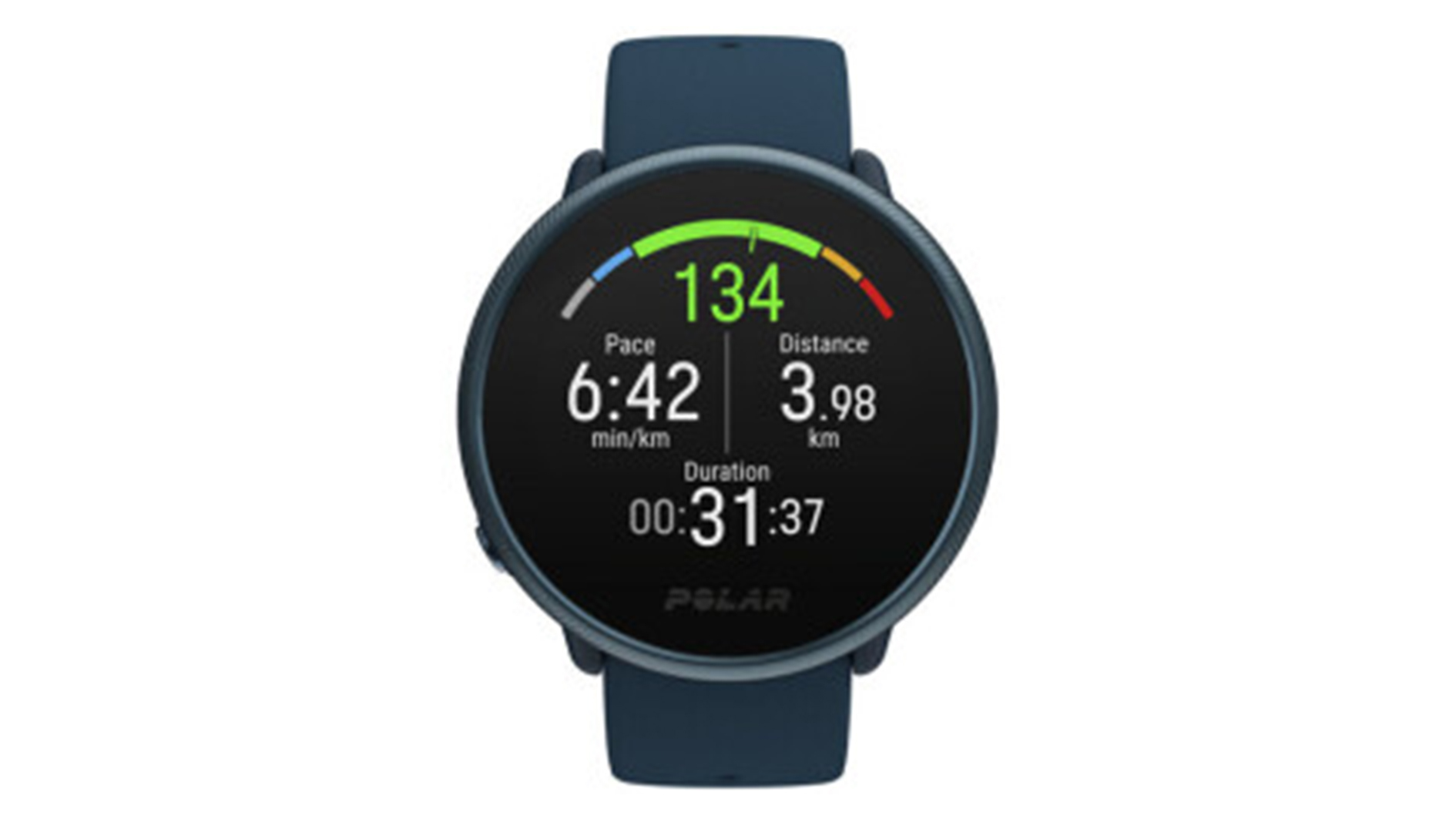
Polar Ignite 2 Fitness Watch
Specifications
Reasons to buy
Reasons to avoid
Like the Fitbit, the water-resistant Polar Ignite 2 also has strong GPS functionality, tracking your movements via a number of different positioning systems to record an accurate depiction of your runs. It also tracks your running cadence and heart rate zones during running workouts to help you maximize your gains, showing all those metrics on its always-on display.
Other types of exercise are covered too, including swim-tracking, plus workout modes for up to 130 other sports. This makes it the best fitness tracker for monitoring a gargantuan range of exercise types, whether you’re into yoga or boxing.
One of the most interesting health features is the Polar FitSpark system. This clever technology offers suggestions each day for different workouts based on your recovery, fitness level and training history. It’s like having a personal trainer on your wrist, taking the guesswork out of how to make your fitness regime more varied and whole-body centered.
The Polar Ignite 2 will also guide you through each session and keep you motivated until you finish. The recovery program is excellent too. Polar’s Nightly Recharge measurement gives you an idea of how quickly you recover from workouts and the day in general. To boost your post-workout recovery, take a look at our guide to the best handheld massagers too.
5. Fitbit Versa 3: Best fitness watch with GPS
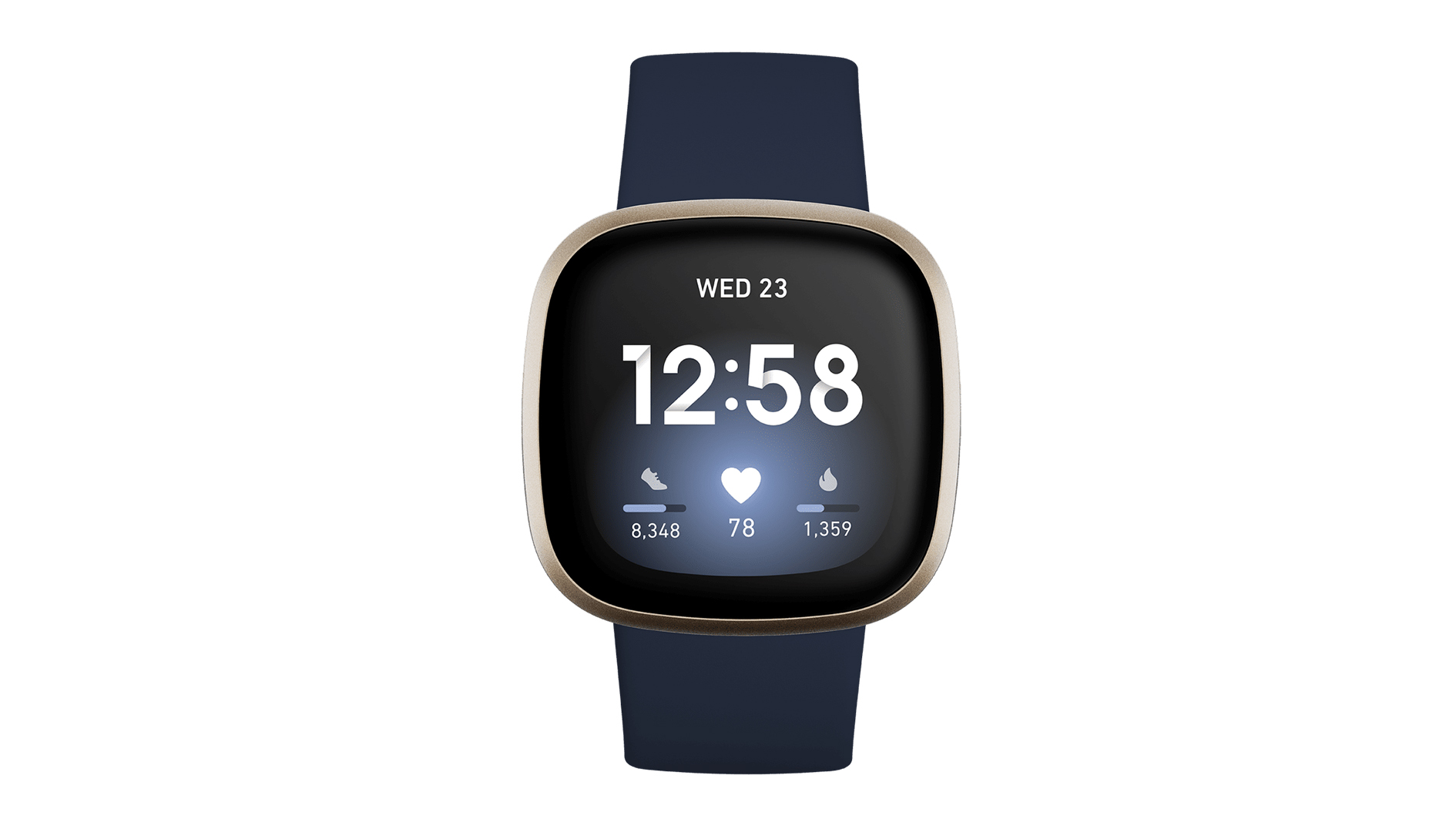
Fitbit Versa 3 Fitness Watch
Specifications
Reasons to buy
Reasons to avoid
Fitbit's position as market leader might be challenged by Apple, but the the Fitbit Versa 3’s features set is impressive considering it’s more affordable. This stylish fitness watch comes with integrated GPS to track the pace and distance of your runs, walks and rides, whether you’re cycling outdoors or racking up the miles at home with a bike trainer.
The 40mm AMOLED display is big and bright, and is attached to a strap that’s easy to remove for cleaning or switching out for a different look. While the Fitbit Versa 3 doesn’t have as much health-tracking clout as the flagship Apple Watch Series 6, there’s more than enough here for most users.
The Versa 3 with GPS is designed for 24/7 activity and heart rate monitoring, plus there are premium features such as an SpO2 sensor to measure blood oxygen levels during sleep. Basic tracking covers steps, calories and snoozing, and you can view workout intensity maps (to pinpoint where you really gunned it) in the app. There are 20+ activity modes, including circuits and running, and you can soundtrack your exercise courtesy of the Spotify watch app.
You should be able to tease around six days' battery life out of the Fitbit Versa 3 per full charge, depending on what you’re using it for. Feeling stressed? Take advantage of guided breathing sessions on the device, though more mindfulness options are available on subscription - read our Fitbit Premium review for more.
6. Garmin Vivofit Jr 3: Best fitness tracker for kids
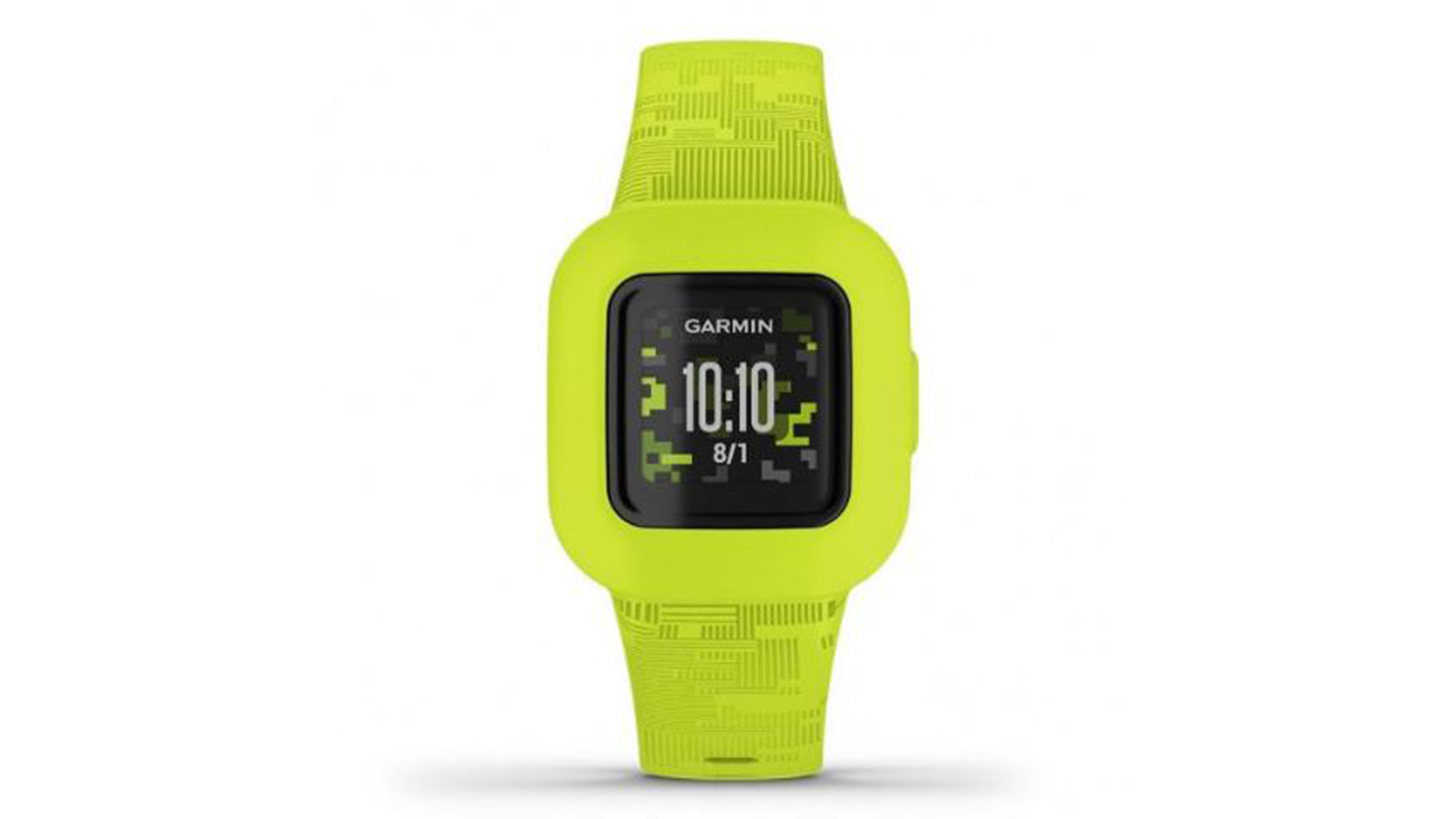
Garmin Vivofit Jr 3
Specifications
Reasons to buy
Reasons to avoid
If you'd like your kids to be more physically active, the Garmin Vivofit Jr 3 could be just the thing to help. It's a fun fitness tracker for kids with the option of a Marvel or Disney-themed ‘skin’ to make it fun to wear.
The watch and associated app should (in theory) encourage your little one to enjoy being active, and in a variety of cool ways too. For example, 60 minutes of daily physical activity unlocks mobile games, and they can collect points over time to unlock badges, images and icons.
As you'd expect from a kids activity tracker, the Garmin Vivofit Jr 3 also includes a host of functions designed to help them through their day. These include reminders to brush their teeth, through to a chore-tracking system with rewards for house jobs well done. All of these features interact with a parent-controlled app.
Garmin's Toe-to-Toe challenges encourage kids to playfully compete against their buddies and family members (the app works with grown-up Garmin fitness trackers too). Great battery life (via a replaceable cell) eliminates any pesky charging issues, though it's mainly so long because the tracking functions on the Garmin Vivofit Jr 3 are basic.
7. Whoop Strap 3.0: Best fitness tracker for athletes
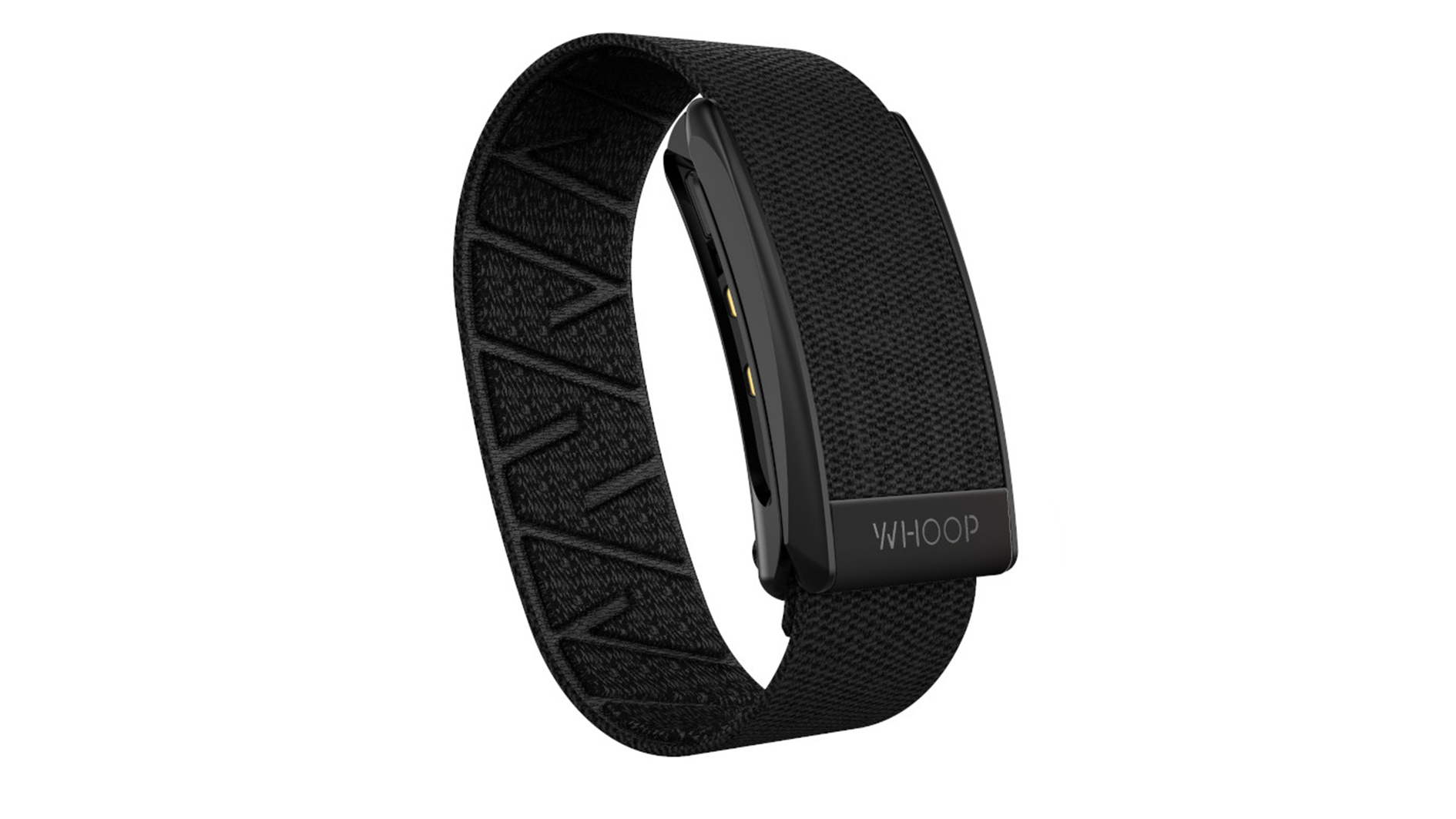
Whoop Strap 3.0
Specifications
Reasons to buy
Reasons to avoid
While the Whoop Strap 3.0 is without question one of the best fitness trackers around, it doesn't quite fit into the same category as the others here. There's no screen for a start, and it doesn't cover all of the same health and fitness metrics.
So instead of things like steps taken and running pace, the Whoop Strap 3.0 watches your entire activity and vitals. We’re talking heart rate, respiratory rate, your commute, walks, house chores, sleep (and naps) to get a robust picture of what your body is doing. It then gives you personalized feedback across recovery, strain and sleep.
All of this taps into Whoop's comprehensive activity plan to give you the ultimate workout... and to ensure your muscles rebuild well afterwards. It’s ideally suited to people who want to perform at their best with each workout, and to rest equally as well. In short, it’s the ideal activity band for helping you avoid exercise burnout.
The Whoop Strap 3.0 certainly isn’t for everyone (you’ll hate it if you desperately need a screen and a constant influx of smartphone notifications) and it’s only available directly from Whoop and on a subscription. But for serious fitness fans ready to push themselves to new limits in terms of exercise, recovery and sleep, this is worth a look.
8. Fitbit Inspire 2: Best activity tracker for swimming
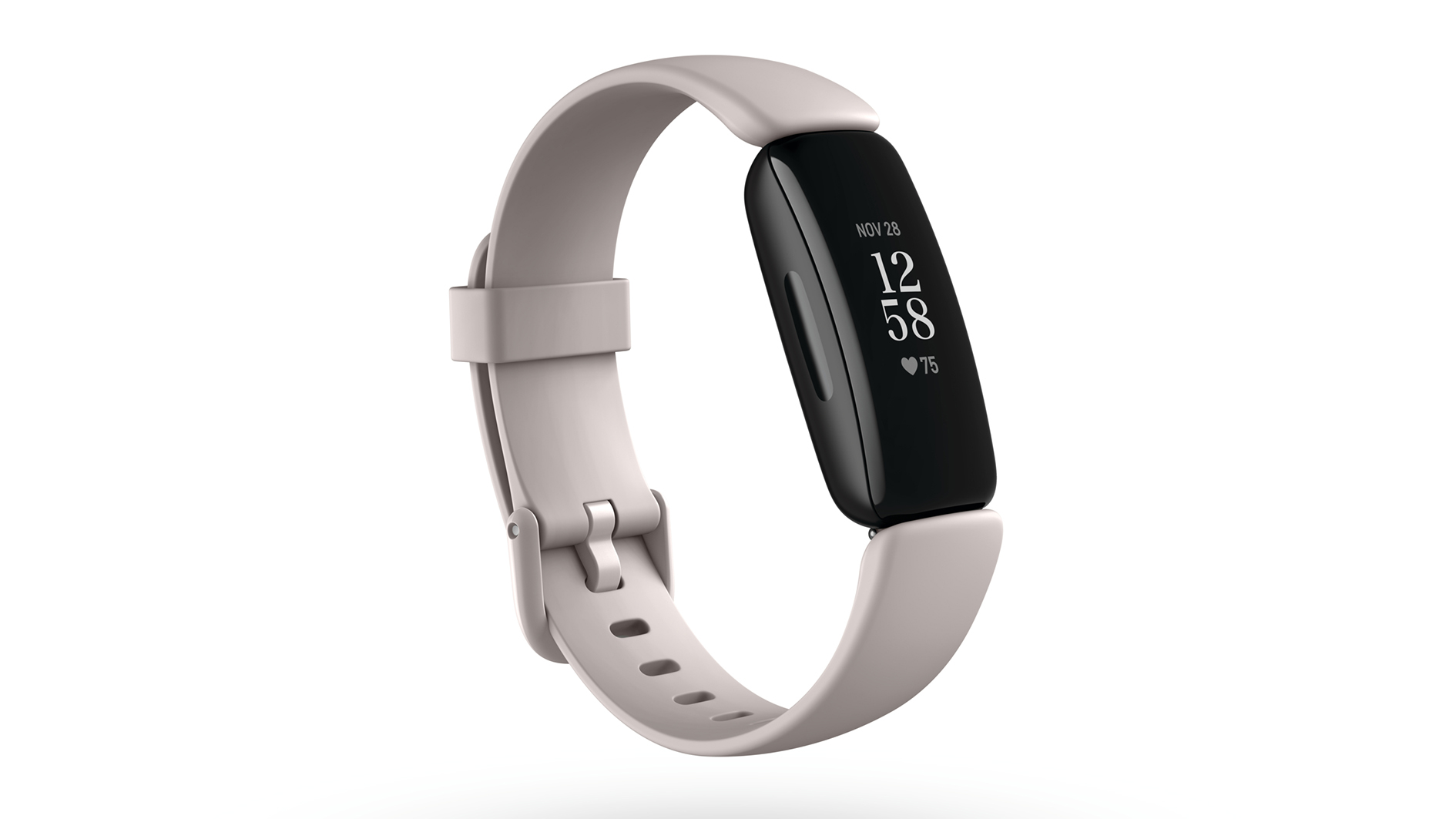
Fitbit Inspire 2 Activity Band
Specifications
Reasons to buy
Reasons to avoid
While we highly recommend the Fitbit Inspire 2 for use in the pool - it's fully waterproof, and dishes out stats on how long you've been swimming - that's far from the only reason it made our list of top-rated fitness trackers. This slimline band is laser-focused on helping you to enjoy feeling fit and healthy, and it has some very smart features to get the job done.
One of the major attractions is Fitbit’s Active Zone Minutes. These are based on your personal target heart rate zones, so the Inspire 2 will buzz when you enter “peak, cardio and fat burn” during exercise.
We also love Fitbit’s SmartTrack functionality. This automatically recognizes a number of different exercises and starts tracking your effort as soon as you begin working out. As standard, the Fitbit Inspire 2 also keeps tabs on your steps, distance, and active minutes.
Wear it to bed and you’ll be on your way to creating a personalized Sleep Score. This is only available via a Fitbit Premium subscription, but it could be of interest if you want to see metrics such as how long you sleep for, and how much of that time was spent in Deep and REM sleep.
If you misplace the Fitbit Inspire 2, you'll be able to track it down via the Tile app. And with up to ten days' battery life, which is very impressive for a fitness tracker, it'll stay ‘findable’ for quite some time.
9. Garmin Vivoactive 4: Best fitness tracker for running

Garmin Vivoactive 4 GPS Sports Watch
Specifications
Reasons to buy
Reasons to avoid
The Garmin Vivoactive 4 has everything you'll need for tracking your runs and treks. It's a fantastic GPS fitness watch, with an on-board workout coach to keep you moving. It even includes a safety function that automatically sends your live location to selected contacts if it detects you have fallen while out running or hiking.
Switch off GPS and it'll follow your exercise and daily activities for a solid eight days straight. The Garmin Vivoactive 4 works very well without a phone, capably hosting things like music and NFC payments, so if you want to go for a hike or run without taking your bank card, you're all set here.
There are tons of health and fitness features to dig into here, starting with animated on-screen workouts. These enable you to follow along with cardio, yoga and pilates workouts, though we wouldn’t recommend doing so on such a small screen. Over 20 GPS and indoor sports apps (including walking, running, golf and swimming) are included, and there’s an on-wrist running coach.
You can also build your own workouts via Garmin Connect. Much like the Apple and Fitbit trackers, the Vivoactive 4 monitors your blood oxygen saturation and stress levels. It’ll also track your period, hydration levels and respiration. Our favorite feature is called Body Battery Energy Monitoring. Quite simply, this enables the fitness watch to figure out your best time for a workout and when to rest. Clever.
10. Amazfit Bip U Pro: Best fitness watch for Apple fans on a budget
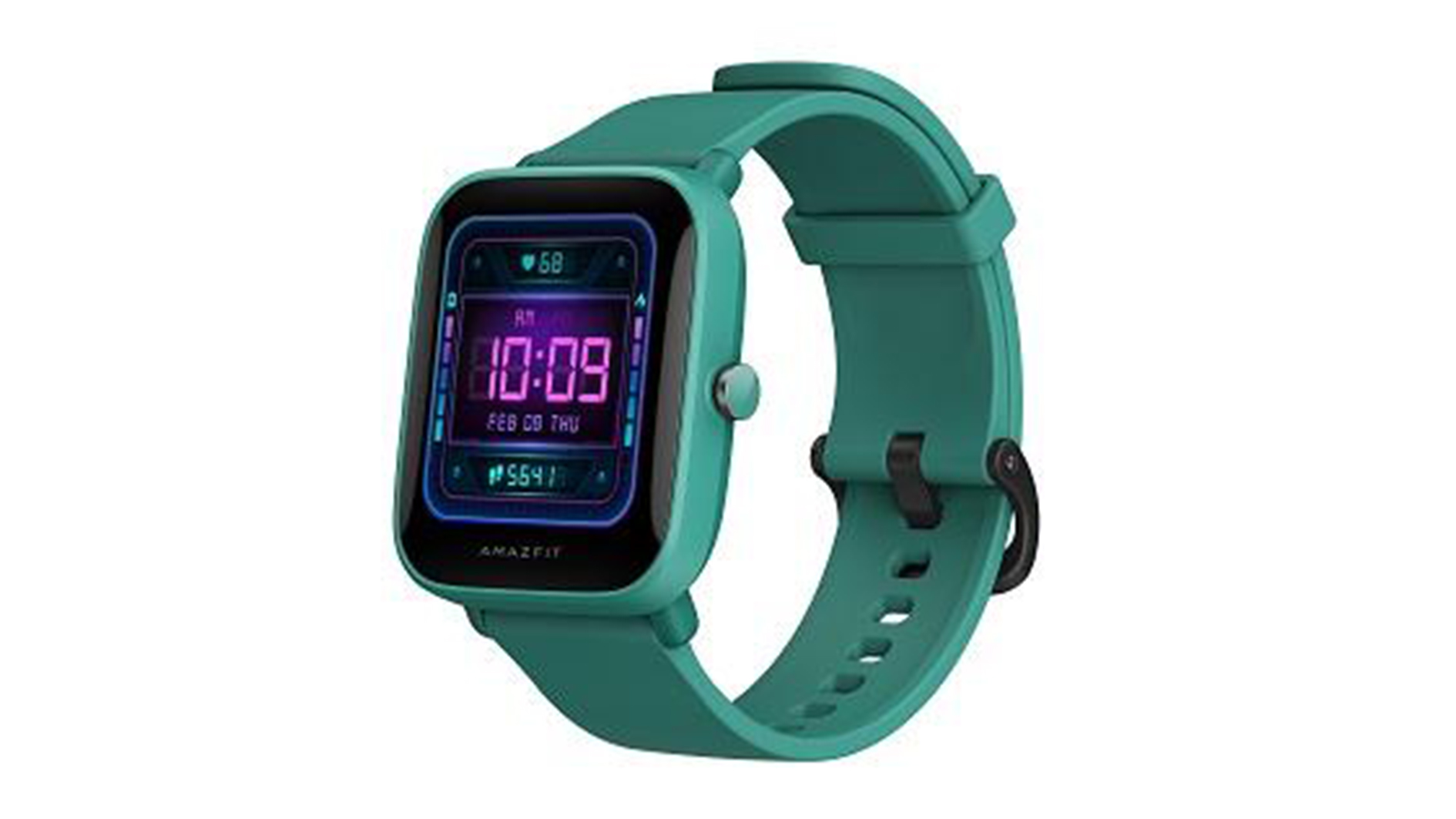
Amazfit Bip U Pro
Specifications
Reasons to buy
Reasons to avoid
The Amazfit Bip U Pro is one of the cheapest fitness watches on the market, with a huge range of features, including Alexa Voice Control. You also get GPS, estimated VO2 max, sleep tracking, heart rate tracking, and multi-sport tracking.
There’s also no denying the Amazfit Bip U Pro has taken some design inspiration from the Apple Watch. Sticking with the design for a second, this fitness watch tracker uses an always-on display, and it has a superb battery life too.
Some might find it a bit chunky, and users have also reported issues with the tracking function not pausing automatically during a break in a workout. Still, for the much, much lower price, you get an awful lot of fitness tracking tech for your money here.
11. Xiaomi Mi Smart Band 6: Best fitness tracker on Amazon

Xiaomi Mi Smart Band 6
Specifications
Reasons to buy
Reasons to avoid
Xiaomi's sixth bite at the smart tracker apple is definitely its toothiest yet, because the Xiaomi Mi Smart Band 6 is one of the best looking fitness bands we've seen. Part of this is thanks to its bright, high-resolution AMOLED screen, with gorgeous curved edges. Part is due to its silicon case and band, available in one of six colors.
It's super-cheap too, making the Xiaomi Mi Smart Band 6 a perfect choice if you're just looking to try out a fitness tracker to see how well it would suit your health and fitness goals. There's plenty of functionality on board here, including some very detailed sleep tracking options and breathing exercises on board which can keep you feeling calm.
The Xiaomi Mi Smart Band 6 even tacks on 19 new fitness modes for a total of 30, covering all kinds of varied exercise. Whether you're playing basketball, getting down to some Zumba, or even strapping on the skates and hitting the ice, you'll be able to activate specialized tracking.
Best fitness tracker deals
Best fitness trackers FAQ
How much do the best fitness trackers cost?
On average, you can expect to pay between $60 and $650 for a fitness tracker, which is a very wide price range. It starts from the basic step-tracking wearables at the entry level end of the market, and goes right up to the all-singing, all-dancing GPS and VO2 max-tracking devices that pack in music and Bluetooth headphone connections, contactless payments, Wi-Fi, LTE and so much more.
There are plenty of options in between these two extremes, meaning there's sure to be an ideal fitness tracker out there for you. Before you shop, jot down the main features you're looking for, especially the absolute must-haves. These vary for each of us, but could include robust heart rate monitoring, sleep tracking or automatic workout recognition for running, cycling or aerobics so that you don't have to fiddle around with any menus.

How do fitness trackers work?
Functions vary by tracker, but virtually every fitness device will employ a three-axis accelerometer to sense movement. That accelerometer's output is interpreted by software to infer what you've been doing; if it senses the bump of a footstep tied to the swinging of an arm, it knows you're walking.
More advanced trackers will add GPS, which can sense your position in the world. In conjunction with the accelerometer they may be able to sense the difference between a walk and a run. Trackers with more advanced software can even determine the length of your stride, helping you to run more efficiently or make minute tweaks to your gait.
Those trackers which can track heart rate typically use optical sensors, which shine an infrared light on your wrist and measure variances in its reflection to sense your heartbeat. Again, the quality of these is often down to the quality of the software which interprets them, but they'll generally get very close to your actual pulse.

How to choose the best fitness tracker for you
We covered a lot of this in the introduction, but essentially choosing the best fitness tracker for you depends on what level of fitness you currently have, what types of exercise you enjoy, what level of stats you want available to you, and whether you're interested in sleep tracking and period tracking smarts too.
Most of today's fitness trackers offer contactless payment support, while a good range offer GPS, either integrated or when connected to your phone.
Also think about how you want the fitness tracker to feel on your wrist: whether a lightweight tracker that you can leave on at night for sleep tracking is your top priority, or whether you need a super-robust tracker that can withstand any rough and tumble during outdoors exercises and bootcamps.
Are fitness trackers worth it?
Virtually anyone can benefit from a fitness tracker. Even if it's just a case of having a curious look at what you've been doing in the day, having that data readily available is a great motivator.
More advanced trackers are a real plus if you're doing any kind of serious exercise, because they can clearly show improvements in your health and fitness over time, helping you to set and reach goals. Some even act as a coach, suggesting the best next step for your plan.

Those with medical needs might find them useful, too - particularly if your pulse rate or blood oxygen are important, or you need to track your sleep.
But if all you want to do is track your steps, bear in mind that virtually every modern phone can do just that without the need for a separate fitness tracker. Yes, you'll need your phone in your pocket at all times, but you'll save money and keep your wrist clear.
Are fitness trackers FSA eligible?
Although fitness trackers can be used to improve one's general health, an IRS ruling means they are usually not FSA/HRA/HSA eligible - although in certain circumstances you may be able to get them reimbursed.
If they have been properly designated as a medical need, for instance to treat obesity, you will require a Letter of Medical Necessity and the appropriate FSA/HRA/HSA account to secure funding. Dependent care flexible spending accounts (DCFSA) and limited care flexible spending accounts (LCFSA) are not eligible.
Sign up to receive the latest news, reviews, buying guides and deals direct to your inbox
Claire is Health and Wellness Editor at Top Ten Reviews and covers all aspects of health, wellbeing and personal care. With over 17 years' experience as a qualified journalist, writer and editor, Claire has worked across some of Future's most prestigious, market-leading brands. Due to past struggles with insomnia, she is particularly passionate about the role quality sleep plays in our physical and mental health, and loves helping readers to sleep better. Claire is always keen to hear from brands regarding products and services that can help readers feel healthy, happy and empowered.

